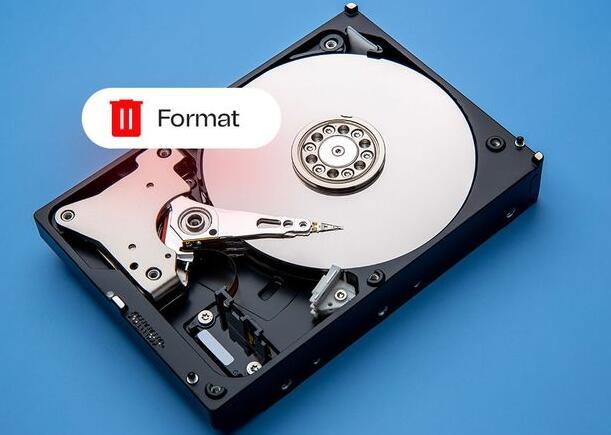Low-level formatting, also known as physical formatting, is a process that initializes the disk at the most fundamental level. It creates the physical tracks and sectors on the disk surface, setting the stage for the higher-level operations that make modern computing possible. The tools that perform this task are nothing short of digital alchemists, transforming raw, chaotic magnetic surfaces into the orderly, usable medium upon which the data-driven world depends. Let us delve into the mythical realm of low-level format tools and explore their grandeur in an exaggerated narrative spanning a thousand words.
The Enchantment of Low-Level Formatting
Imagine a vast expanse of raw magnetic material, an untouched canvas of potential where data has yet to find its form. This is the primordial state of a hard disk drive (HDD), chaotic and unusable, waiting for the touch of an adept artisan. The low-level format tool is that artisan, wielding its power to etch out the fundamental structure of tracks and sectors, the very essence of digital order.

The Legendary Tools
In the pantheon of low-level formatting tools, a few names shine with a brilliance that outshines the rest. These tools are the mythic forges where the raw essence of storage media is refined and tempered.
HDD Guru's Low-Level Format Tool
HDD Guru's Low-Level Format Tool is a name spoken in hushed tones among the technomancers of the digital age. This tool is not merely a utility; it is a digital philosopher's stone, capable of transmuting the base, formless chaos of an HDD into a pristine, orderly expanse ready for data's delicate dance.
This tool delves deep, reaching into the very soul of the drive. It writes zeros to every single sector, purging remnants of past data, and lays down the physical format anew. The tool’s interface, though simple, belies the profound transformation it enacts. Users are but mere mortals guiding a powerful force through the pathways of their machines, invoking a process that will cleanse and renew.
Seagate SeaTools for DOS
Seagate's SeaTools for DOS is another titan in the realm of low-level formatting. It is a veritable Excalibur, wielded by those who seek to restore their drives to a state of primeval purity. While its primary purpose is diagnostics and repairs, its capability to perform low-level formatting is nothing short of magical.
With SeaTools, the user embarks on a journey through a DOS-based interface, a nostalgic nod to the ancient days of computing. As it writes zeros across the surface of the drive, it not only obliterates all traces of previous data but also rejuvenates the drive’s magnetic structure. It is as if the drive is reborn, ready to serve anew with the vigor of youth.
The Arcane Process
Low-level formatting is an arcane ritual, a series of intricate steps that must be performed with precision and care. It is a process that transcends the mere act of erasing data; it redefines the very nature of the storage medium.
Phase 1: The Purge
The first phase of low-level formatting is the purge. Here, the tool initiates a cleansing fire, sweeping away the detritus of past usage. This is no mere deletion; it is a thorough expunging of all data, reducing everything to a blank slate of zeros. The purge is absolute, leaving no shadow of the past.
Phase 2: The Rebirth
Following the purge comes the rebirth. The tool now etches out the physical structure of the drive, meticulously laying down tracks and sectors. This is the genesis of order from chaos, the creation of a pristine landscape where data can be stored with precision and reliability. The magnetic domains are aligned with the precision of a master craftsman, ensuring that each sector is perfectly formed.
Phase 3: The Blessing
In the final phase, the newly formatted drive is blessed with the ability to communicate its readiness to the operating system. This involves a series of verifications and calibrations, ensuring that the drive is not only formatted but also optimized for performance. The blessing is the final touch, endowing the drive with the reliability and efficiency that users depend on.
The Reverence for Data Integrity
Low-level formatting tools are revered not just for their ability to format, but for their commitment to data integrity. They ensure that the drive is free from bad sectors, verifying each part of the surface with meticulous care. This dedication to perfection is what sets them apart, making them indispensable in the arsenal of IT professionals and enthusiasts alike.
Data Purity
The purity achieved through low-level formatting is unparalleled. Unlike high-level formatting, which merely sets up a file system, low-level formatting ensures that every byte of data is written to a surface that has been cleansed and perfected. This purity is akin to a freshly fallen snow, unmarred and pristine, waiting to be traversed.
Reliability
Reliability is the cornerstone of low-level formatting. By thoroughly checking and rechecking the drive’s surface, these tools ensure that the final product is not just ready for use, but primed for optimal performance. This reliability is the foundation upon which robust data storage is built.
The Mythos of the Format Toolsmiths
The creators of low-level format tools are akin to ancient blacksmiths, forging instruments of incredible power and precision. Their knowledge is deep, their skill unmatched. They understand the subtleties of magnetic domains and the intricacies of data storage, weaving their expertise into tools that perform digital miracles.
The Alchemists of Data
These toolsmiths are the alchemists of the digital age, transforming the chaotic potential of raw drives into structured repositories of information. Their work is both science and art, blending technical prowess with an intuitive understanding of magnetic media.
Guardians of Integrity
As guardians of data integrity, they take on the sacred duty of ensuring that storage devices perform flawlessly. Their tools are their legacy, crafted with care and precision, and used with respect and reverence by those who understand their true power.
The dance of data on a low-level formatted drive is a testament to the precision and power of the tools that shape it. These tools, with their legendary capabilities and profound impact, are the unsung heroes of the digital world. They transform chaos into order, ensuring that our data lives and thrives on a foundation of absolute purity and reliability. As we use and depend on these drives, we partake in a dance that is as old as computing itself, a dance choreographed by the masters of low-level formatting.




